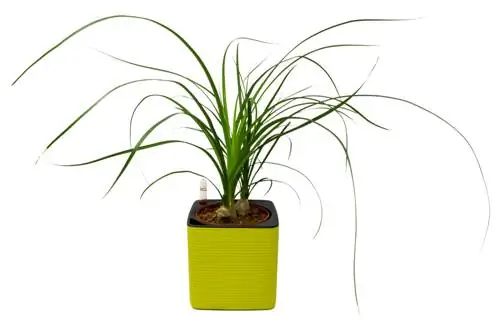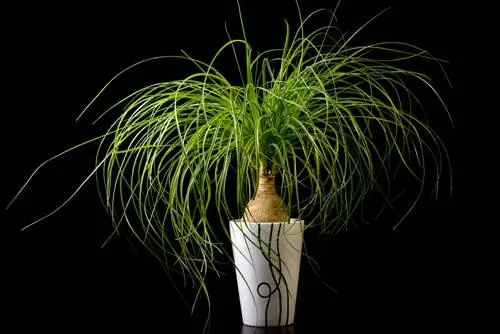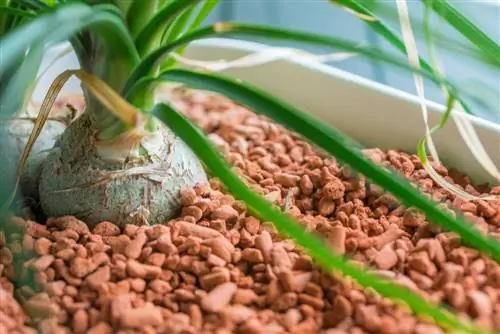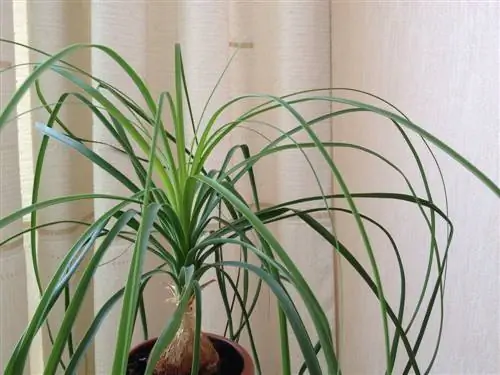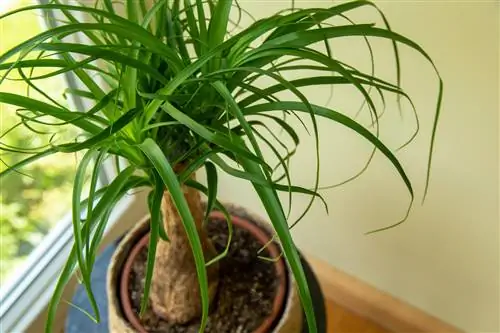- Author admin [email protected].
- Public 2023-12-16 16:46.
- Last modified 2025-01-23 11:22.
The easy-care elephant foot is a great eye-catcher in the winter garden or living room. A suitable pot should be a given. To achieve a harmonious overall picture, you don't necessarily have to dig deep into your pockets and spend a lot of money.

What type of pot is ideal for an elephant foot?
The ideal pot for an elephant's foot should be heavy enough to provide stability, not too large, and have drainage holes to avoid waterlogging. A shallow bowl can be visually appealing, and when repotting the new pot should be only a few centimeters larger.
What kind of planter does the elephant foot need?
Since the elephant's foot is a houseplant, it does not need a particularly weatherproof pot, but it should be heavy enough to give the tree some stability. A plastic pot (€32.00 on Amazon) is certainly too light for a large elephant foot. It is also important to have a hole in the bottom of the pot or container through which excess irrigation water can drain quickly, because the elephant's foot cannot tolerate waterlogging.
How big should the pot be?
If your elephant foot gets a very large pot, it will put a lot of energy into growing its roots and as a result will grow even slower above the ground than it already does. It is therefore better to choose a slightly smaller pot. When repotting, simply take the next pot size with just a few centimeters more diameter.
The elephant's foot looks very attractive in a large, relatively flat bowl. Since he is one of the shallow-rooted people, he feels quite comfortable there. But here too, make sure that waterlogging has no chance.
Can I also use a deep pot?
With a deep pot, there is a risk that the roots will naturally start to grow larger than in a shallow planter. There is simply more soil that supplies the elephant's foot with nutrients. If you fill the lower third of the pot with large pebbles or old pottery shards, then not as much soil will fit in and the roots will reach their limits.
The most important things in brief:
- Pot should not be too big, but definitely heavy enough
- flat bowl visually very attractive
- repotting if the old pot becomes too small
- new pot just a few centimeters bigger
- absolutely important: drain hole and drainage
- reduce the size of a large pot with stones or pottery shards
Tip
As long as the roots of your elephant's foot don't want to outgrow the pot, the pot is usually big enough.

